The luxury goods company said founder Ippolita Rostagno will remain at the brand’s helm.
Rocks On: Paraiba tourmaline
While Brazilian Paraiba tourmaline remains in high demand, skyrocketing prices and dwindling supply have led to an uptick in interest in the cuprian tourmaline coming out of Africa.
New York--In the little less than three decades since its discovery, Paraiba tourmaline has surpassed a great number of other gemstones in popularity.
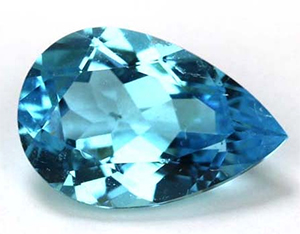
The industry and consumers alike have one man to thank for bringing this exceptional stone to light: Heitor Dimas Barbosa. Beginning the early 1980s, Barbosa was digging in the hills in Paraíba, Brazil, convinced that he would find a gem unlike any the world had yet seen.
He was right.
The first gemstones were retrieved from the mines in the area in 1989, according to the International Colored Gemstone Association, and it was all uphill from there.
“The intense, neon greenish-blue color of a fine Paraiba is like no other gemstone. It’s captivating,” said Andrew Rosenblatt of Akiva Gil Company. “So it appeals to people who want to stand out or who may already have other fine gems in their collection. Its rarity also appeals to serious gem collectors.”
While iron, manganese, chrome and vanadium are responsible for the coloring in other tourmalines, Paraiba tourmaline is different in that its unique color is owed mostly to the presence of copper.
Even as the original area that first gave the world its new favorite neon gemstone began to run dry, sources in Africa began yielding a chemically comparable copper-bearing tourmaline, an alternative that since has become mainstream.
These days, between major retailers and high-profile designers advertising in consumer magazines, as well as celebrities stepping out on the red carpet wearing Paraiba jewelry, the gemstone’s star has never been higher.
Supply and pricing: Brazil
The Brazilian material, with its saturated color and high quality stones, likely will always be the favored, the preferred. Demand for the stone is sky high. But, as the story goes with gems, there is a finite amount.
There is almost no supply of new material coming from Brazil these days, according to a number of sources. Rosenblatt said that at best, there may be melee but even this is in very limited quantity and quality. There are very few fine gems floating around
Ruben Bindra of B&B Fine Gems said that it’s been a long time since they’ve been able to find a new mined stone, and his company has bought more stones in recent years from old collections rather than sources closer to the supply, such as miners and cutters.
In addition to the mines running out of material, Brazilian Paraiba tourmaline also hit a supply snag this summer, when federal police in Brazil shut down two mines in Paraíba and arrested six people as part of the investigation into an alleged scheme to illegally mine and export Paraiba tourmalines, according to WWD.
Though federal prosecutors in Brazil did not respond to National Jeweler’s request for an update on the case by press time, João Raphael Lima, the federal prosecutor leading the case in the state of Paraíba, told WWD that “The police apprehended a lot of material, from rough, uncut stones to lapidated tourmalines, so we know there was a lot of production coming from those mines. The operation has definitely disrupted business.”
According to the story, Parazul, Mineracao, Comercio e Exportacao Ltda had permission to conduct research at the mine but not to explore it commercially. Yet police found evidence that they had been extracting large volumes of Paraiba tourmaline and sending them to a company that would give them certificates stating they were regular tourmalines, allowing them to export the gemstones at much lower taxes.
Not surprisingly then--with supply being what it is and continued demand from the trade and consumers alike--the price for Paraiba tourmaline from Brazil remains high. Bindra noted that prices have doubled, if not more, within the last three years or so for the material.
In fact, pricing for Brazilian Paraiba has only gone up since its discovery.
Adam Gil of Jerry Gil & Co. said that when the material first started hitting the market, it was priced somewhere around $100 to $200 per carat on average, and now he sees the highest quality material go for $50,000 per carat or more.
Given the high price and dwindling supply of Brazilian Paraiba, it is beneficial for the trade that there are sources that yield chemically comparable cuprian tourmaline, albeit on another continent entirely.
Supply and pricing: Africa
There has been a number of finds of cuprian tourmaline in Africa since it was first discovered in the early 2000s in Nigeria. The major player in the industry today appears to be Mozambique. About five years ago, Gil said the trade started making the switch over to using that material.
Demand has followed quickly.
Yet, there still seems to be some question about the quality of the stones from Mozambique and whether many of them can compare to the Brazilian Paraibas.
Rosenblatt said at the beginning, the deposits included crystals that yielded larger, cleaner gems than the Brazilian material. But, while there were some exceptional pieces of rough that showed intense color, the Brazilian material typically still was a stronger, more vivid neon blue.
“The newer deposit from Mozambique seems to be much lighter in color and intensity and heavily included. We’ve seen quite a few stones from this production and have not seen any clean material,” he said.
While the fine quality Mozambique gemstones that match the Brazilian stones in intensity might be few and far between, what the newer source can offer a buyer is a lower price point and larger stones.
“A 10-carat Brazilian Paraiba is a very rare stone, but Mozambique has produced stones as large as 100 carats,” Bindra said. “I personally have sold a few 50-carat-plus Mozambique stones.”
The Mozambique supply has dwindled slightly, though there remains plenty out there.
Rosenblatt said prices remains strong, even for the included material. The top material can cost $5,000 and $6,000 per carat at wholesale and continues to go up as demand increases.
While it might be true that a collector would likely only want Paraiba from Brazil, for many others who just want to own a slice of that neon blue color, the Mozambique material is more than worthy to fill that demand.
“At the consumer level, I feel only the real collectors and connoisseurs would like only Brazilian Paraiba, but the rest … will happily buy a Mozambique stone,” Bindra said.
The Latest

Laura Burdese, who joined the Italian luxury brand in 2022, will take on the role in July.

The National Jeweler editors revisit the most noteworthy industry happenings and design trends from 2025.

How Jewelers of America’s 20 Under 40 are leading to ensure a brighter future for the jewelry industry.

Need a gift for the cat lover who has everything? Look no further than our latest Piece of the Week.


It purchased the “Grosse Pièce,” an ultra-complicated Audemars Piguet pocket watch from the ‘20s, for a record-breaking price at Sotheby’s.

The lab-grown diamond grower now offers custom engagement and fashion jewelry through its Kira Custom Lab Jewelry service.

Roseco’s 704-page catalog showcases new lab-grown diamonds, findings, tools & more—available in print or interactive digital editions.

Chandler got his start at Michelson Jewelers and has served as DCA president and CEO since 2001. He will retire at the end of the month.

The boutique is slated to open this week inside Terminal 8, offering pre-owned Rolex watches and more to international travelers.

Sponsored by Digital Monitoring Products
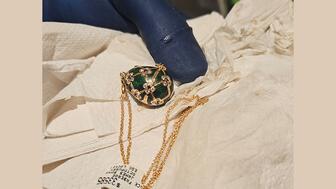
The special-edition egg pendant ingested in a New Zealand jewelry store was recovered after a six-day wait.
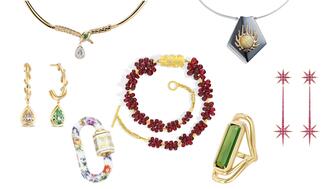
Associate Editor Natalie Francisco plays favorites with Piece of the Week, selecting a standout piece of jewelry from each month of 2025.

The “Love and Desire” campaign is inspired by the magic that follows when one’s heart leads the way, said the brand.

Two awardees will receive free tuition for an educational course at the Swiss lab, with flights and lodging included.

Berta de Pablos-Barbier will replace Alexander Lacik at the start of January, two months earlier than expected.
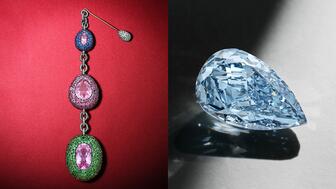
Sotheby’s held its first two jewelry sales at the Breuer building last week, and they totaled nearly $44 million.

Winners will receive free registration and lodging for its fourth annual event in Detroit.

Here are six ideas for making more engaging content for Instagram Reels and TikTok, courtesy of Duvall O’Steen and Jen Cullen Williams.

The honorees include a notable jewelry brand, an industry veteran, and an independent retailer.

Carlos Jose Hernandez and Joshua Zuazo were sentenced to life without the possibility of parole in the 2024 murder of Hussein “Sam” Murray.

Yood will serve alongside Eduard Stefanescu, the sustainability manager for C.Hafner, a precious metals refiner in Germany.

The New Orleans jeweler is also hosting pop-up jewelry boutiques in New York City and Dallas.

Set in a Tiffany & Co. necklace, it sold for $4.2 million, the highest price and price per carat paid for a Paraíba tourmaline at auction.

The jeweler’s “Deep Freeze” display showcases its iconic jewelry designs frozen in a vintage icebox.
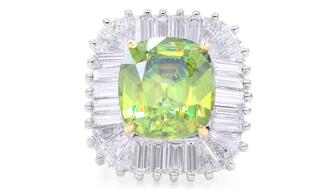
Take luxury gifting to new heights this holiday season with the jeweler’s showstopping 12-carat sphene ring.

This year's theme is “Unveiling the Depths of the Ocean.”



























